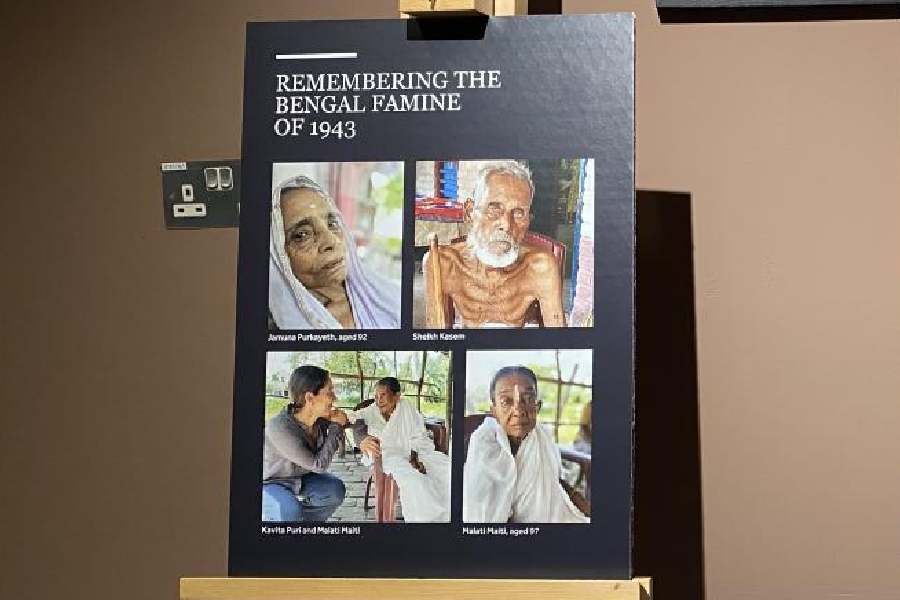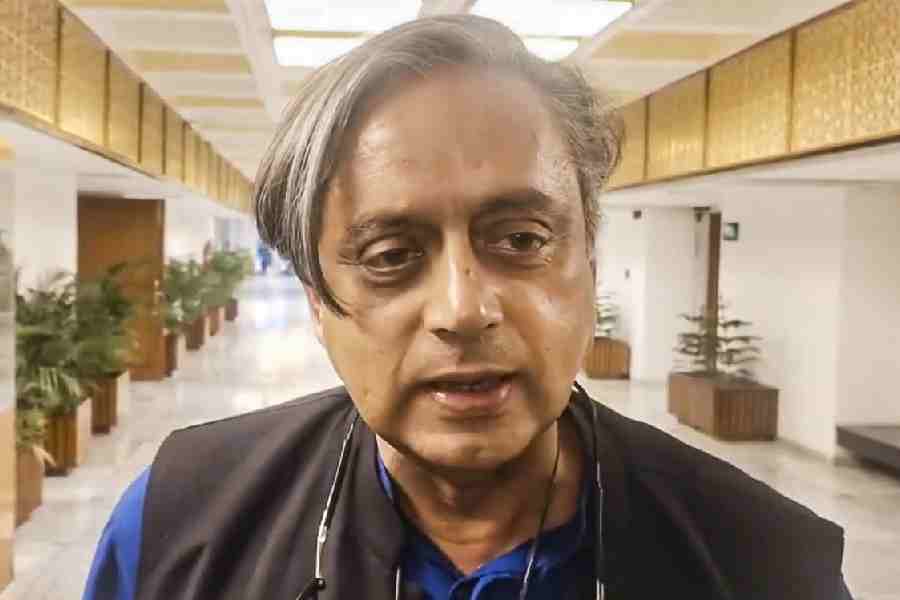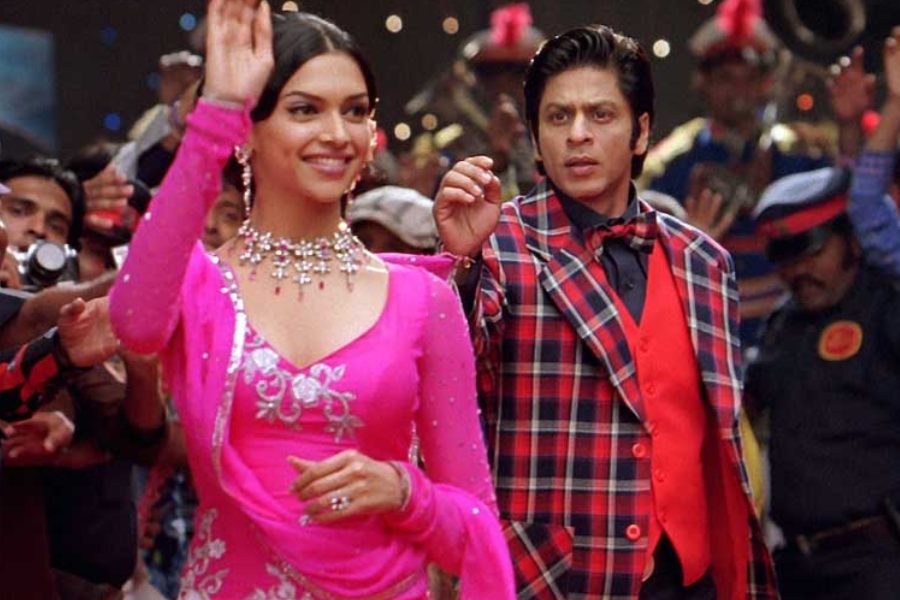 |
| Illustration: Ashoke Mullick |
After six decades in France, Syed Haider Raza has returned to the country whose passport he never once relinquished. He has left behind his possessions. His apartments in Paris and studio in Gorbio in south of France he has gifted to his Mauritian caregiver. “Like a Sufi, Raza went empty-handed and returned empty-handed,” says Akhilesh (who goes by one name), Raza Foundation trustee and Bhopal-based abstract painter, on the phone.
The artist has felt the winter of homecoming literally in his bones. The cold chill of Delhi made him sleep in his sweater, and some days after this interview he was hospitalised with pneumonia. But the day we meet in his new home-studio in the capital, Raza walks in, unstooped, taking tiny steps and assisted by Sanjiv Choube, vigilant administrator, attendant and housekeeper.
He is wrapped in a red-and-black herringbone muffler, a white shirt and a pair of black trousers, his feet tucked in leather moccasins. “I am from India originally, I am very happy I am back,” opens Raza, the soft cadence sometimes muting his words.
Raza has set up his easel in a three-storey edifice in Safdarjung Development Area (SDA), which already has the outline of a work in progress. The studio-home-gallery was chosen by friends such as Akhilesh and Ashok Vajpeyi, the chariman of the Lalit Kala Akademi, as a homecoming that was in the offing since his sculptor wife Janine Mongillat died in 2002. “After Janine’s demise — she was much younger than I but unfortunately got an incurable disease — I needed nine or 10 years before I could decide to return. But what aided this decision was that we had no children.”
Janine, he adds, was “a very wonderful” partner. “When I lost her I said now my greatest attachment to this country (France) is gone. I took these decisions not in a day. All these changes take time.”
India’s highest priced modern artist (in 2010, Christie’s auctioned his work “Saurashtra” for Rs 16.42 crore) is a year short of 90. “I have to try to take care of my health. And god knows how long he will keep me,” Raza says, with a fatalistic squeeze of my hand. His eyes clear behind black-framed square glasses, his flashback flows unprompted but his energy abates as the afternoon sun dips.
Old friends like Francis Souza are recalled. Both along with K.H. Ara and a few others started the celebrated Bombay Progressive Artists’ Group in 1947, to show what could be done with Indian tradition as depicted in sculpture and painting, “and not just copy it.”
Raza has a chuckle about Souza’s irreverence. “Bullshit” is how Souza described some of the established names of the time. “He had his own way of thinking and was very self assured. I kept quiet mostly. Souza was very conversant with new writers, painters and poets, and would walk up to them and talk. It was a rare gift at that time,” he says generously.
“I feel without being prejudiced in favour of my friends that some of the most important world painters don’t have what Tyeb (Mehta), (M.F.) Husain, (V.S.) Gaitonde and Souza possessed. These are the painters who have shown us the way,” he says emphatically.
As it happened, many of his friends left for Europe to grapple with new approaches and “to be able to think clearly”. Souza went to London and Raza to Paris. And like Souza, who died in Mumbai in 2002, Raza has returned to India in his twilight years.
Raza was born in Babaria, Mandla, in what is now Madhya Pradesh, in 1922. He went to Mumbai in 1947, where his work caught the attention of visiting American and German professors who encouraged him hugely.
As a young boy his family and teachers were important to him. “What they said meant something to me. And I have concentrated on these things.” Concentration was a lesson learnt as a little boy. His father, Sayed Mohammed Razi, a forest ranger, had asked a teacher to help his son focus on his studies.
“The teacher drew a point on the school wall. ‘Just look at this point,’ he said. ‘Don’t think of anything else.’ Your mind keeps on wandering. It’s a small thing but it will help you understand what I am saying,’ ” says Raza, as he mimics a kindly tone. “I sat all alone before the point. Then he returned and said, ‘Yes, very good. You have been working hard. Go home now. We will do these lessons every day.’ ” Raza laughs. “I was delighted it was not a beating.”
In school, with his brother who wrote and friends who were poets, he brought out a newsletter called Pushpanjali. “I did the cover page. I was inspired by Tagore.” He eventually gifted the drawing to his friends. “I don’t know where it has gone,” he trails off momentarily.
Just then, tea arrives in exquisite ware, and a glass of juice for Raza. If a village teacher helped him hone concentration, a legendary photographer — whom Raza met in Kashmir while on a scholarship which allowed him to travel and paint — led him to construction. “By chance, I met Henri Cartier-Bresson, who said, ‘Permit me to tell you I appreciate your paintings (landscapes) overall but your work is slightly vague and not precise; it lacks construction.’ ”
Raza was puzzled. “What is construction,” he asked. That’s the base of architecture, came the reply. Study Cézanne, Cartier-Bresson advised him. “Of course, I knew about Cézanne, but not from this point of view,” Raza explains.
The artist, who describes himself as “a very determined man, even then, at 28 or 29”, studied French like a “mad man” at the Alliance Française in Mumbai. The French consulate was impressed enough to pay for his studies at the École Nationale Supérieure des Beaux-arts in Paris.
Raza arrived in Paris in 1950. “I was de-ligh-ted,” he says, stretching the last word, “and so happy to see the Louvre.” In 1956, he became the first non-Frenchman to be conferred the Prix de la Critique, a prestigious critics’ award. Life became easier for the young artist who could now hold exhibitions in different places in France.
“As would be normal for a man, I met a woman, a French artist, Janine Mongillat,” he twinkles. “I had avoided her in art school, for 4-5-6 years, till it was impossible to do so any more. I feared what it would be for her if I had to go back to India. But I wanted to marry her.” Her parents agreed but wanted their only child to stay in France. Raza empathised, and stayed on for 10 years.
A three-year hiatus in America, where Raza was a visiting lecturer in New York and San Francisco, reaffirmed for him how much he wanted to be a painter. The couple returned to France and flitted between Paris and Gorbio for the next 30 years, visiting India more after the death of Janine’s parents.
“I have been deeply interested in my country, Hindu culture, the thought behind the elements that join human beings to the supreme God, or Truth. Indian thought directs you to something,” he reflects. “Unlike with Islam or Christianity in Europe, we have no shame or hesitation in using the word linga or yoni.” He gestures towards a small easel that holds his work, a panel in two sections, with red and blue representational depiction of the male and female organs.
One can’t help but ask obliquely about the atmosphere for artists in contemporary India and their role in society today. “You are asking too many questions,” he chides gently. “I think the artist’s job is to create a work of significance, of pictorial importance: individual or personal thought that can be expressed in silence for those who want to understand. I say for those who don’t understand, it is best not to bother about it. You can make an effort to explain to them but not more than that.”
He pauses to take a sip of water. Raza’s works have sold for millions of dollars but the money mostly goes to the galleries and buyers. “I don’t get a thing. I am very happy personally that I have been able to work in a peaceful manner. And if someone makes money out of my work, I am very happy. All my relatives and friends think I have been a bit silly. You see, I would have made a maximum of 1,500-2,000 euros, perhaps 8,000 euros now.”
Akhilesh explains the matter later. Raza, he says, has no concept of money. In reality, a small canvas of his will sell for 15,000-20,000 euros.
Our time’s coming to an end, but I want to know about his love for good food. “I love women,” he cuts in, impish. “I don’t have flirtations with women. If a woman attracts me, I say what I feel. I don’t waste my time or her time.”
Clearly, Raza saab is far from hanging up his herringbone scarf, and retiring quietly. “I wish I could do more for art in a personal, intense way. I have tried to do it with the Raza Foundation (cash awards given for the arts with his personal money). Now I want a place for paintings that have found no outlets.”
He bought the SDA building in the name of the foundation, not his. “I have very good associates but as long as I have a voice I would like to live here and do things in my own way. After me, they will do what they want to do,” he smiles.










